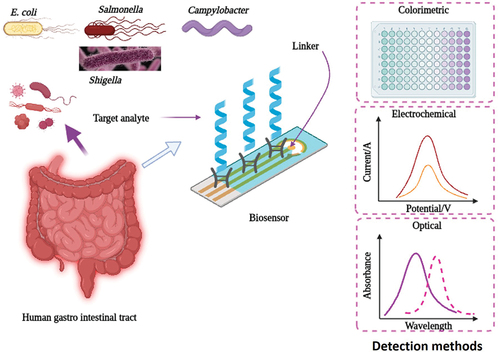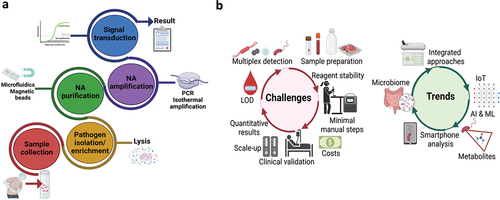Figures & data
Figure 1. Point-of-care detection methods. Traditional methods for detection of gut pathogens include bacterial cultivation, PCR, biochemistry tests and microscopy analysis and generally take from 24 to 72 hours from sample collection to diagnostic. Point-of-care detection uses immunological tests, molecular biology methods as well as biosensors (colorimetric, electrochemical, fluorometric) leading to a fast diagnostic (generally ranging from 10 minutes to 3 hours). Created using Biorender.com.

Table 1. Examples of immunological methods used for detecting foodborne pathogens.
Table 2. Examples of molecular methods used for detecting foodborne pathogens.
Figure 2. Representation of the various detection methods used in the process of gut pathogen identification and the most common infectious bacteria detected.Created using Biorender.com.

Table 3. Detection of various gut bacteria with multiple types of biosensors.
Figure 3. Integrated sample-to-answer POCT devices – a. Technical criteria for designing an integrated POCT device; b. Trends and challenges in POCT development and clinical implementation. Created using Biorender.com.

Table 4. Smartphone-based POC tests used for bacterial detection.
